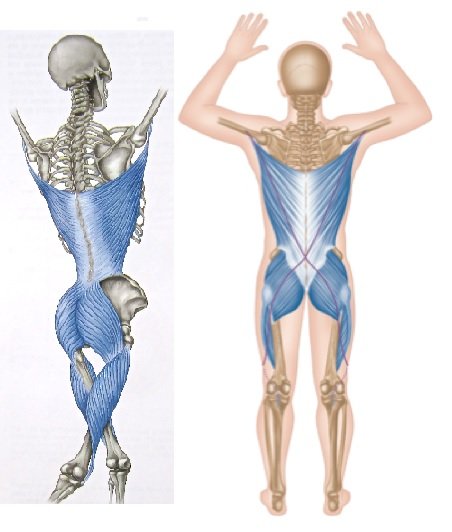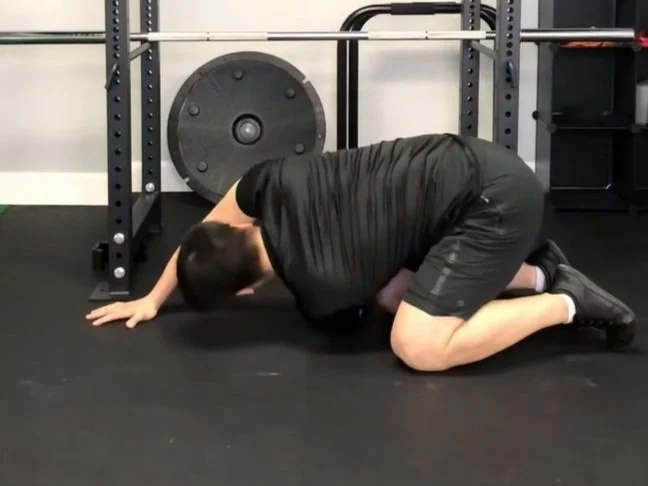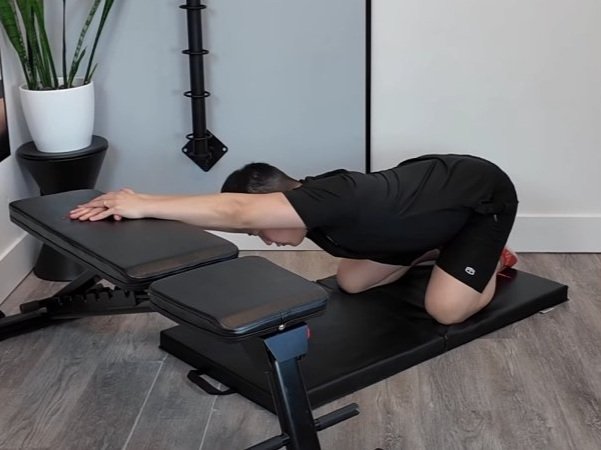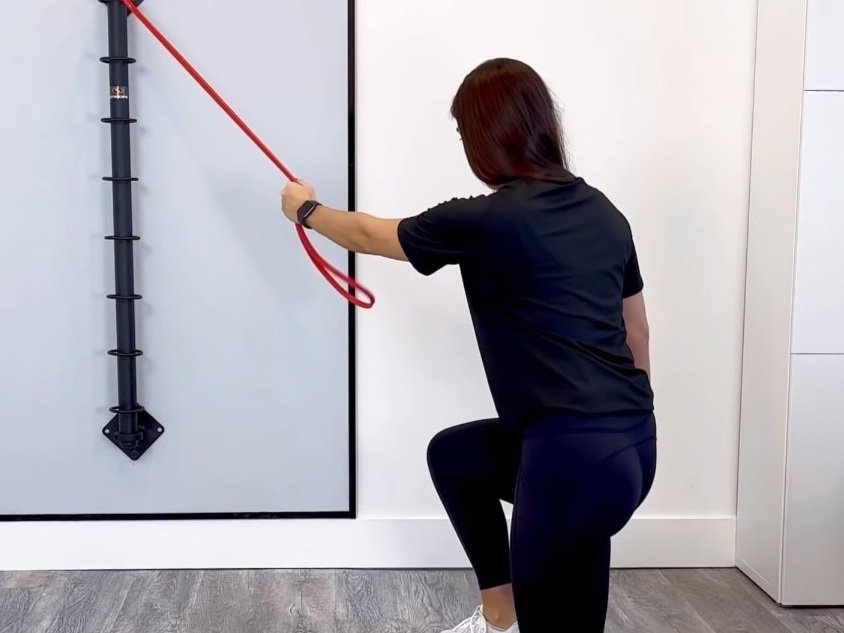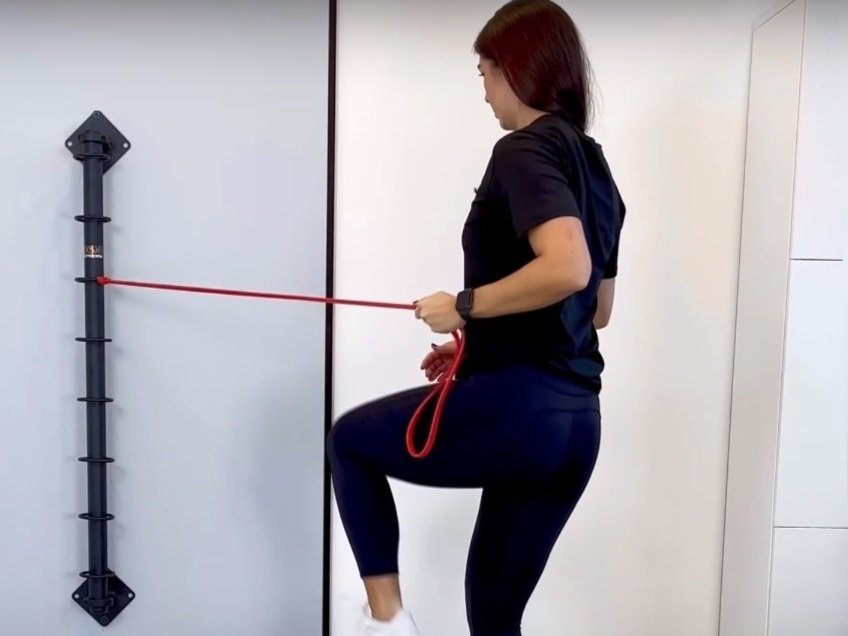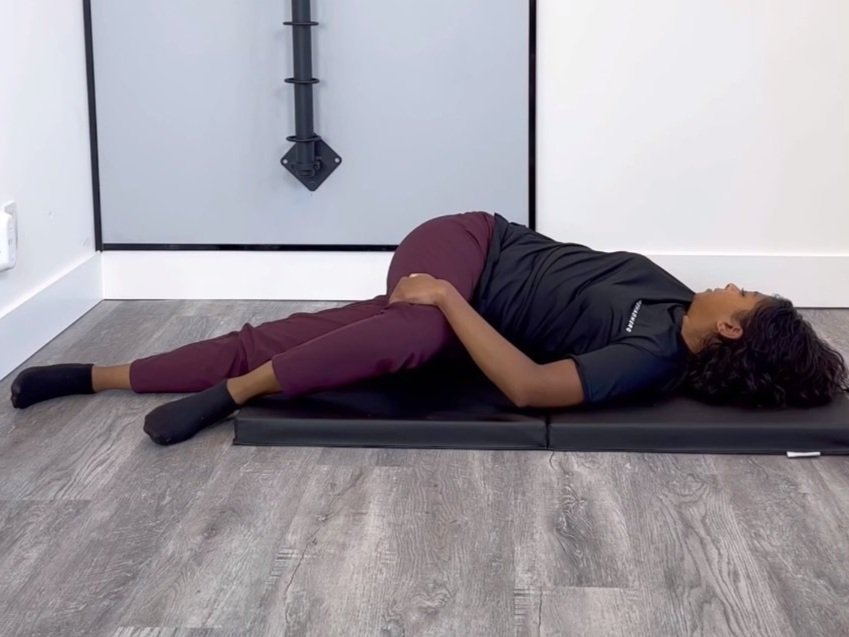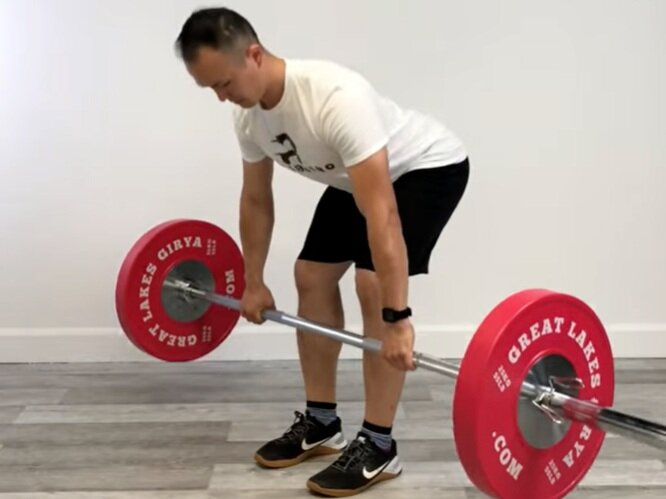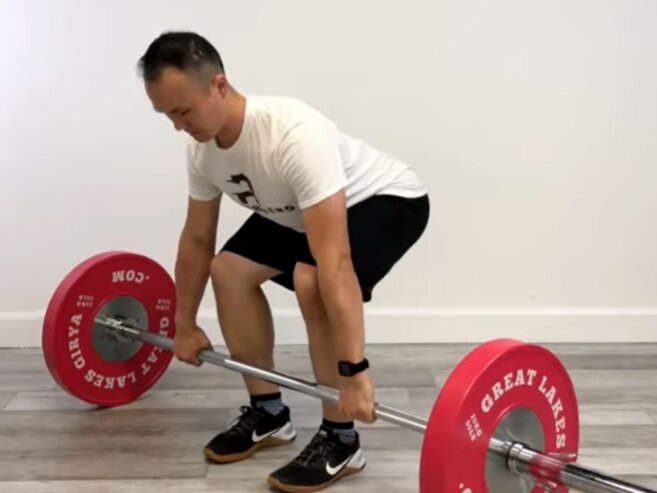Functional Back Fascial Line
Functional back line
Learn about how this fascial connection can be related to your back pain or hip pain.
What is the functional back fascial line?
Before we can dig deep about the functional back fascial line we first need to understand what fascia is. Fascia is connective tissue that envelops our muscles and organs. It is thin but strong and holds every organ, blood vessel, bone, nerve, and muscle in place. It has its own nerves which are almost as sensitive as your skin and can be related to musculoskeletal injuries and pain. Fascia not only holds your organs in place, but also stabilizes tissues, transfers forces, imparts strength, separates muscles, and attaches muscles together.
Fascial lines, or fascial nets, or fascial trains, or fascial meridians are grouped connections of fascia found throughout the body. Unlike most muscles in the body, fascial connections cross over multiple joints and can influence your movement patterns when restricted. Within fascial lines are connections of membranes, ligaments, tendons, joints and muscles. These fascial lines may be superficial or they may be deep. They can be loose or tight, and help to create stability, strength, elasticity, flexibility, and posture. When dysfunctional, functional compensation may be experienced in another muscle along a fascial line’s path, leading to aberrant movements pattern and even pain.
The functional back line refers to the fascial connection between one latissimus dorsi and the opposite gluteus maximus and vastus lateralis. This fascial connection’s elastic properties allow for the conservation of energy in activities like walking or running. When looking at both functional lines together, the muscles will form an X on the back of the body, with the lines crossing midline at the thoracolumbar fascia.
Functional back fascial line connecting the left latissimus dorsi, thoracolumbar fascia, right gluteus maximus, and right vastus lateralis.
What happens if your fascia is tight?
Fascia is made up of collagen, elastin, retinacula fibers, and basal lamina (a.k.a. extra-cellular matrix). Of these components, the basal lamina is used for cell to cell communication and nutrient delivery. When muscles within a fascial line are in contracture the extra-cellular matrix is thinned and membranes stick together. As a result, the collagen fibers within the fascia adapt by building up leading to increased fascial stiffness and decreased mobility. The thinned basal lamina will also decrease nutrient delivery and cell hydration which can further exacerbate the pain cycle. As a result, a pain-spasm-pain cycle may ensue.
When do you need use the functional back line
The functional line is most active during physical activity and exercise. It is utilized in sports as it is responsible for creating multi-joint stabilization, counterweight, or transferring power from one side of your body to the other. An example would be in judo when throwing the opponent from one side of your body to the other by pulling strength from the ground and transferring it through your torso to your arms. Since the functional back line is most active during movement, it is likewise least active during static activities like sitting and standing.
Another example of the functional back line would be in the single leg deadlift exercise. In this exercise strength is generated from the floor by driving your heels into the ground. This will engage the gluteus maximus to extend the hips bringing the body to an erect position. The latissimus dorsi muscle will be used to stabilize the lumbar spine. The vastus lateralis (one of your four quadricep muscles) will assist the gluteus maximus by straightening out the knee to allow you to stand upright. It is due to this cross body fascial interaction that it is generally recommended to hold a weight with the arm opposite of your stance leg.
A left sided single leg deadlift stabilizing through the left vastus lateralis, left gluteus maximus, bilateral thoracolumbar fascia, and right latissimus dorsi.
The overall purpose of the functional back line is to allow efficient movement through opposite limbs. It achieves this through transmitting forces from the lower limbs, through the core muscles, and to the opposite upper limbs.
Functional back line and rotation
Since this fascial line crosses the midline of the body, it is also related to any activities that require rotation. Through contraction of this myofascial train, left rotation of the torso can be generated with contraction of the, left latissimus dorsi, right gluteus maximus, and/or the right vastus lateralis. Likewise, activities that require anti-rotation like the squat will require isometric co-contraction of these muscles to stabilize against resistance.
Video: The pull back lunge exercise is used to train anti-rotation through the concentric contraction of the latissimus dorsi and opposite gluteus maximus and vastus lateral muscles. This video depicts activation of the left latissimus dorsi through shoulder extension, right gluteus maximus through hip extension, and right vastus lateralis through knee extension.
To stretch this fascial line the opposite motion will be required. If following the track starting from the left shoulder to the right hip, left shoulder flexion, right torso rotation, right hip flexion, and right knee flexion will be needed to stretch out the fascia of a tight functional back line.
Video: The thread the needle exercise stretches the functional back line of the top arm. If the right arm is the top arm, the latissimus dorsi is stretched in shoulder flexion and torso right rotation, gluteus maximus in hip flexion, and vastus lateralis in knee flexion
How do I know if my functional back line is tight?
If you’re wondering whether or not your functional back line is stiff and is related to your back, hip or shoulder pain, it is recommended to get assessed by a health care provider that specializes in functional movement.
Physiotherapists can assess for fascial tightness by completing a physical examination. During this component of your initial assessment, they will test your passive and active range of motion to see where more flexibility is needed.
A chiropractor will be able to assess your joints to see if they’re related to the fascial stiffness that you are experiencing. By examining the joints of your hip, shoulder and spine they’ll be able to give you a treatment that increases range of motion and mobility.
Fascial stretch therapists specialize in fascial assessment by examining groups of muscles through their fascial trains.
Massage therapists will be able to assess for tissue tightness and provide a treatment targeting your fascial lines.
By examining your movement these professionals will be able to screen for tightness and be able to provide an exercise program specific to your individual needs. To book in with a Rehab Hero clinician in Toronto or Markham click the button below:
FAQ
-
In short, yes. The superficial back line is a group of muscles that run parallel to the spine. Muscles include the neck extensors, back extensors, hamstrings, calves, achilles and plantar fascia.
-
Functional lines do not affect posture. Functional lines are most active during movement and not during static positions. Since good or bad posture relates to holding a static position, tension in functional lines do not directly apply.
-
The front functional line is the fascia connection between the pectoralis major, rectus abdominis and adductor longus. Similar to the functional back line, the functional front line crosses the midline of your body.
Written by: Dr. David Song
Dr. David Song is a chiropractor in Toronto with a passion in weight lifting and fitness. By focusing on functional training he helps his patients achieve their fitness goals safely and efficiently. Outside of the clinic you can find him working out in gyms across North York.


